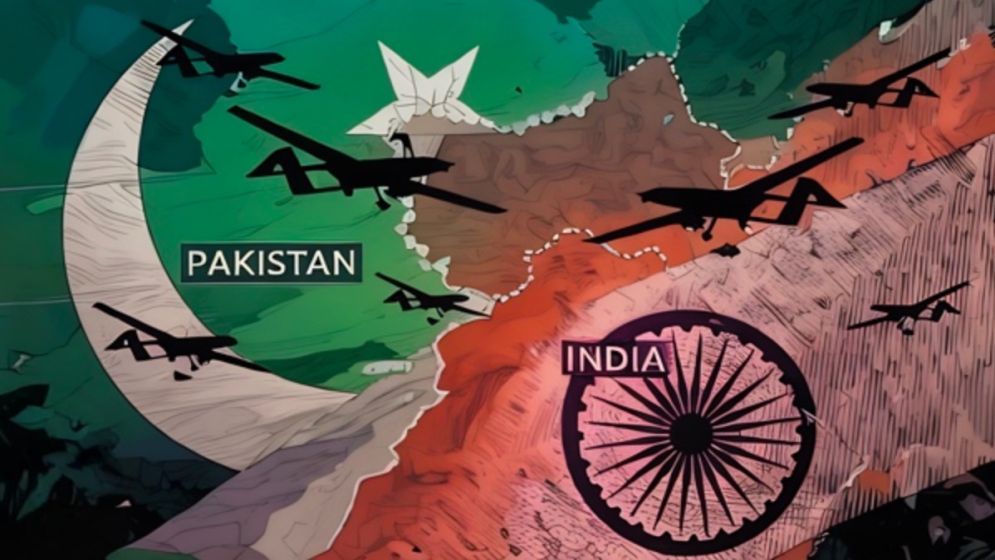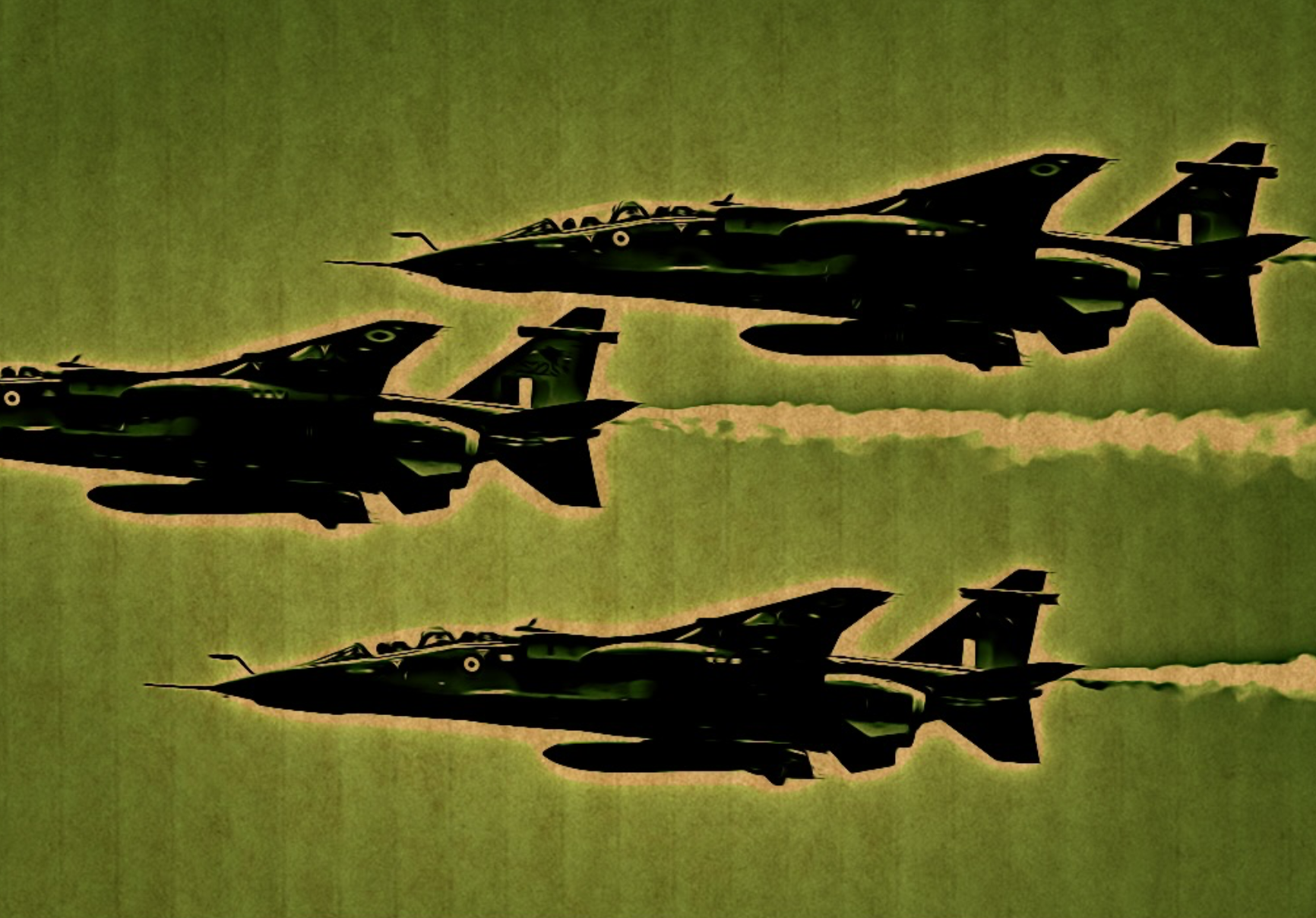India faces a wake-up call from Pakistan’s Chinese-Built fighter jets… but what’s its strategy?

This month, India unveiled a blueprint for the Advanced Medium Combat Aircraft (AMCA), a stealth fighter jet designed to reassert Indian air dominance across a region that is rapidly slipping from its grip.
The announcement, confirmed by India’s Ministry of Defense and reported by Reuters, comes at a moment of a perceived insecurity in New Delhi. Pakistan, long treated as India’s arch rival, has scored a symbolic–and strategic–breakthrough.
Its Chinese-supplied J-10C fighters, backed by PL-15 long-range missiles, reportedly outmaneuvered Indian Rafales during April skirmishes over Kashmir, resulting in the downing of two Indian jets–one of them French-made. U.S. officials, cited in the same report, confirmed the loss.
In short: the unthinkable happened. Pakistan, long the junior contender in the regional arms race of the subcontinent, drew first blood.
India’s AMCA program is a response to the broader erosion of its air power credibility. The Indian Air Force (IAF) today operates just 31 squadrons–well below the 42 considered necessary for full-spectrum defense.
And even that diminished fleet is stretched thin by aging Soviet-era aircraft, production delays, and inconsistent procurement strategies.
The AMCA is meant to change that–a twin-engine, fifth-generation stealth fighter with indigenous pedigree and high-tech aspirations. The government intends to invite bids from both private and state-owned firms to manufacture it, hoping to sideline Hindustan Aeronautics Ltd., whose Tejas program has faced chronic supply chain issues and delivery delays.
But the timing of the project raises questions.
First, there’s the reality of timelines. India is years away from fielding an operational stealth fleet, and recent history doesn’t inspire optimism.
The Tejas fighter, touted as India’s homegrown marvel, took nearly four decades from concept to combat readiness–and still faces functionality gaps. If the AMCA follows that trajectory, the IAF will be flying blind in a contested sky for the better part of the next decade.
Second, the regional calculus has shifted. China is not only accelerating its own stealth programs but actively equipping Pakistan with aircraft that are battle-proven and sensor-integrated.
The J-10C, which outclassed the Rafale in April, comes equipped with AESA radar and access to a combat-tested missile suite. Meanwhile, the Rafale–once India’s prestige buy–is now showing its limits.
A January 2025 report from the French Institute of International Relations (IFRI) bluntly outlined the aircraft’s radar signature vulnerabilities and limited SEAD (Suppression of Enemy Air Defenses) capabilities.
French Air Force officers themselves reportedly warned that Rafales struggle in exercises against stealth-capable adversaries.

Beyond the stealth
power
The larger issue, however, is strategic psychology.
India’s defense doctrine has long been guided by a belief in technological superiority–a kind of post-colonial confidence reinforced by Western defense partnerships.
But South Asia’s battlefield is no longer shaped by prestige procurement. It is shaped by interoperability, domestic capacity, and speed. Pakistan and China have embraced this reality. India, caught between military ambition and industrial inertia, has not.
There is no doubt that India's bid to develop the AMCA is an attempt to recover dominance in a region that no longer plays by the old rules.
But stealth, no matter how advanced, cannot conceal the deeper vulnerabilities: a declining squadron count, unreliable production lines, and an adversary coalition that has moved from parity to provocation.
The arms race in South Asia has entered a new phase. It’s no longer about who has the better jet–but who can build, field, and fight faster.
And right now, India is playing catch-up.
For India, the Rafale was never meant to be a front-line weapon in a fifth-generation battlefield. Its utility, as recent assessments suggest, may already be nearing obsolescence.
Another IFRI report warned that while the Rafale remains effective in short- to medium-term scenarios, its limitations in stealth and network-centric warfare could relegate it to a support role in high-intensity conflicts led by fifth-generation aircraft.
The future, in other words, is leaving it behind.
Michael Dahm, a former U.S. Navy intelligence officer, echoed this view in a recent podcast for the Mitchell Institute of Aerospace Studies.
Despite the Indian Air Force's numerical advantage over Pakistan, he noted, its structure remains a “hodgepodge”-- an incoherent mosaic of Russian, Israeli, Western, and domestic technologies.
The result is a logistical and operational nightmare: incompatible data links, fragmented maintenance chains, and systems that struggle to speak the same digital language.
In stark contrast, Pakistan’s air force is evolving along a far more focused trajectory. According to defense analysts Wang Xiangsui and Charriot Zhai, writing this month for The China Academy, Pakistan’s post-2000 fighter fleet has been entirely sourced from China.
Just six aircraft types–all interoperable, all digitally integrated. It is not just an air force; it is a coherent combat system.
India, meanwhile, is juggling 14 types of fighters from five different countries–an unwieldy burden in an age where real-time battlefield data and seamless coordination are prerequisites for survival.
Complexity, once mistaken for diversity, is now an exposed liability and the pressure is mounting on India.
With Pakistan expected to receive its first batch of Chinese-made J-31 fifth-generation fighters by early 2026–reportedly at a steep discount and under favorable payment terms–India faces the prospect of being technologically leapfrogged by the very neighbor it once dismissed as a junior adversary.
China’s decision to fast-track J-31 deliveries is a strategic statement. As reported by Newsweek earlier this month, the J-35A variant is being supplied to Pakistan at nearly half the standard cost–widely interpreted as a geopolitical reward for Islamabad’s military alignment with Beijing and a clear signal of deepening bilateral defense entanglement.
The J-31, while considered the “low-end” component in China’s high-low fifth-generation fighter mix, is no lightweight. Paired with the high-end J-20, it forms a cost-effective, dual-threat system designed for both deep penetration and contested airspace operations.
It’s a playbook India has yet to adopt.

India’s wake-up call to reality
Technically, the J-31 offers a stealth-optimized airframe with titanium spars, diverterless supersonic inlets, and a low radar cross-section. Its weapons systems are housed internally to preserve stealth, but it also features wing-mounted payloads and advanced sensors, including electro-optical targeting and infrared search-and-track capabilities.
For India, the dilemma is no longer about defending airspace–it’s about salvaging credibility. An air force defined by bureaucratic bottlenecks, platform incompatibility, and reactive procurement can no longer afford the illusion of dominance.
India has placed its bets on the AMCA program that aspires to replace the aging fleet of Russian-origin jets that currently form the backbone of the Indian Air Force.
According to AeroTime, the AMCA will feature advanced technologies such as supercruise, sensor fusion, and next-generation networking capabilities — all standard expectations for a fifth-generation platform. But aspirations don’t fly sorties.
The aircraft is not expected to enter production before the late 2020s, or more realistically, the early 2030s. And key components, most notably the engine, remain under development.
India is reportedly courting foreign firms–including Safran, General Electric, and Rolls-Royce–to co-develop the high-thrust engine required for the aircraft’s core performance. For now, the AMCA remains a concept–not a deterrent.
Meanwhile, India’s pivot to indigenous fighter development means it will likely reduce imports from traditional arms partners like France and the United States. In response, those very suppliers may begin offering India deeper technology transfers or concessional pricing to retain market access.
At the same time, India is positioning its AMCA and Tejas programs as exportable platforms–particularly to Southeast Asian nations like Vietnam, Malaysia, the Philippines, and Indonesia, who are also wary of Beijing’s military assertiveness.
But at its core, India’s stealth program is not just about fighter jets. It’s about signaling.
The AMCA is meant to tell the world– and particularly Beijing and Islamabad– that India will not accept a diminished role in the skies over South Asia. It is a declaration of intent, a technological flag planted in uncertain terrain.
For New Delhi, the sky is no longer the limit. It is the battleground.
—
Md Sazzad Amin is an entrepreneur and an armchair political analyst

